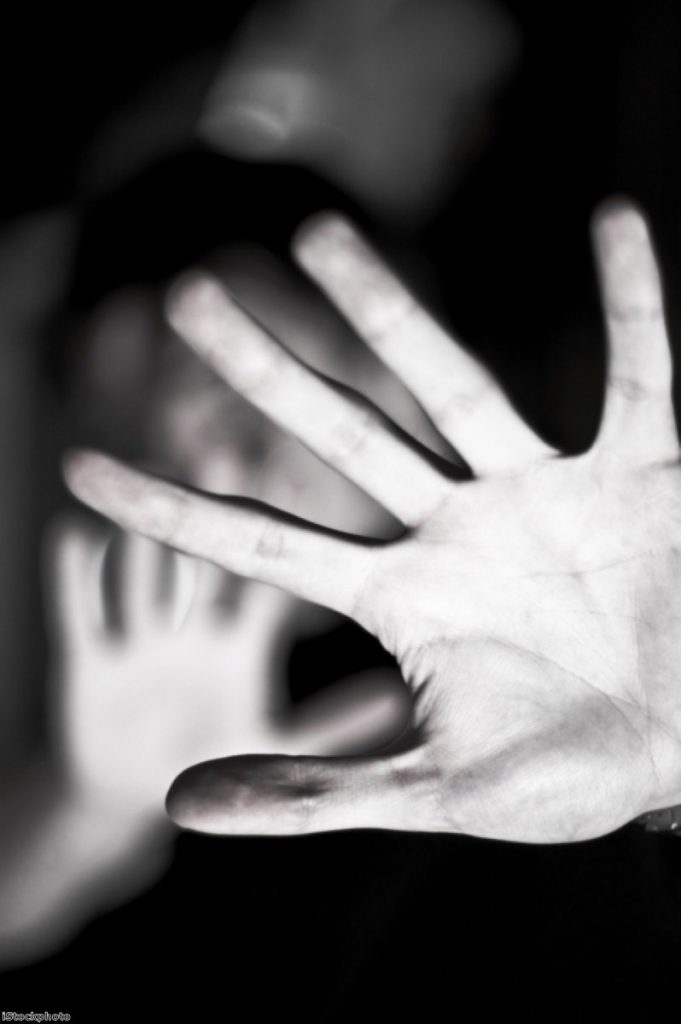It’s not sexist to suggest domestic violence perpetrators are usually men
You might think any discussion on domestic violence this week would centre on the new legislation on coercive and controlling behaviour. The new powers mean those accused of subjecting family members or partners to psychological and emotional torment – an often ignored aspect of abuse against women – could face up to 5 years in prison. Of course, what actually happened though, was that the conversation shifted towards alleged sexism against men.
A poster campaign by Northumbria Police which referred to perpetrators of domestic violence as 'he' has been slammed as sexist on social media over the last few days. The campaign group New Fathers 4 Justice piped up to accuse the police of "disgracefully using out of date gender stereotypes" and "living in the dark ages [while] turning a blind eye to modern life".
But it's not a gender stereotype to describe most abusers as men: it's a fact. All the research and statistics tell us this. And for many of us, our own life experiences will prove it. But, for the avoidance of doubt, let's reiterate some of the facts:
1. Two women will be killed by former or current partners every week.
2. 1 in 4 women will experience domestic violence in their lifetime.
3. On average, a woman is assaulted 35 times before her first call to the police.
4. Globally, 1 in 3 women will experience violence at the hands of a male partner.


Northumbria Police #coercivecontrol posters depict women victims. Because domestic abuse isn't gender neutral. Poll: https://t.co/Fd8M6MdJob
— Polly Neate (@pollyn1) December 31, 2015
Yes, men can be victims too, and of course, violence against anybody, regardless of gender, is never acceptable and help should be available for all. But let's not pretend there is parity between the levels of intimate violence against men and women. There isn't. Data published by the Office for National Statistics found that in 2013/14 women were far more likely than men to be killed by a partner or ex-partner (46% of female homicide victims, compared with 7% of male homicide victims).
A documentary which aired on BBC2 recently called Love you to death, examined some of the untold stories of women who were murdered by their partners, over one year. It was one of the hardest things I've watched for a long time. The common thread throughout was the need for control by the male perpetrators and the violence that ensued when that control was threatened. The point when a woman tries to leave an abusive relationship is often the most dangerous time for her. If the abuser feels he is losing control, death or extreme violence can appear a way for him to regain it.
And Love You To Death: A Year Of Domestic Violence by Vanessa Engle @vengle1 is on @BBCTwo tonight at 9pm. pic.twitter.com/mZ5fuTeyo4
— BBC Current Affairs (@BBC_CurrAff) December 16, 2015
The police still have a long way to go improve the way they deal with domestic violence but they see more of it than most of us do. They are responding to calls every day on the issue. If they portray abusers as men in their campaign it's probably because that reflects the reality of what they see on a daily basis.
There is a tendency by some men to want to bring all conversations back to them. If women speak out about an issue which affects them, they are instantly challenged with the 'what about us?' line. This type of 'whataboutery' does nothing to help either cause. You can be concerned by a different issue to somebody else without needing to diminish the other person's concerns. It's not always about you.
It's important that domestic violence is understood in all its guises, which is why the government's new legislation on controlling behaviour is so vital. It is also right for men to highlight violence against them by women. But what they shouldn't do is try to claim that, on the issue of domestic violence, men and women are effected equally. They're not.









